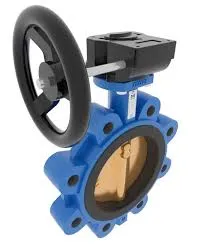Nov . 09, 2024 00:26 Back to list
Rubber Lined Butterfly Valve for Enhanced Performance and Durability in Fluid Control Systems
Rubber Lined Butterfly Valves A Comprehensive Overview
Rubber lined butterfly valves play a pivotal role in various industries, serving as a crucial component for regulating the flow of liquids and gases. These valves are designed to provide effective sealing, corrosion resistance, and operational reliability, making them suitable for a wide array of applications, including water treatment, chemical processing, and food production.
What is a Rubber Lined Butterfly Valve?
A rubber lined butterfly valve consists of a thin circular disc mounted on a rotating shaft inside a pipe. The valve’s primary function is to control the flow of fluids. When the disc is aligned parallel to the flow, the valve is fully open; when the disc is perpendicular, the valve is closed. The rubber lining refers to the layer of rubber material that coats the valve body and the disc. This lining improves the valve's sealing capabilities and offers resistance to various chemicals, thus prolonging its service life.
Benefits of Rubber Lined Butterfly Valves
1. Corrosion Resistance One of the standout features of rubber lined butterfly valves is their resistance to corrosion. The rubber lining protects the valve body and the disc from harsh chemicals and abrasive materials, making them ideal for applications where fluid properties can lead to deterioration of traditional materials like metal.
2. Enhanced Sealing The rubber lining provides an excellent sealing surface that reduces the chances of leakage. This is particularly important in industries where even a small leak can lead to significant safety hazards and environmental concerns.
3. Cost-Effective Compared to other valve types, rubber lined butterfly valves are often more cost-effective in terms of both initial investment and maintenance. Their durability means they require less frequent replacements, reducing long-term operational costs.
4. Lightweight Design The design of rubber lined butterfly valves is relatively lightweight compared to other valve types, such as gate or globe valves. This makes installation and handling easier, significantly contributing to the overall efficiency of pipeline systems.
5. Versatility Rubber lined butterfly valves can handle a range of fluids, including water, slurries, and some chemicals, which makes them versatile choices for various applications. Their adaptability to different conditions makes them valuable in industries like mining, waste treatment, and food processing.
Applications of Rubber Lined Butterfly Valves
- Water and Wastewater Treatment These valves are extensively used in water treatment facilities to control the flow of water and chemicals. Their corrosion resistance is especially beneficial in environments where chlorinated water is present.
rubber lined butterfly valve

- Chemical Processing In chemical plants, rubber lined butterfly valves can handle corrosive fluids, ensuring safety and reliability in the processing of various chemicals.
- Food and Beverage Industry The rubber lining meets standards for food safety, allowing for the seamless and hygienic transport of food products and beverages.
- Pulp and Paper Industry The robustness of these valves makes them suitable for dealing with the harsh working conditions found in pulp and paper production environments.
Maintenance Considerations
While rubber lined butterfly valves are designed for longevity, regular maintenance is essential to ensure optimal performance. Here are some tips for maintaining these valves
1. Regular Inspections Schedule routine inspections to check for signs of wear, tear, or damage. Pay particular attention to the rubber lining for any cracks or abrasions.
2. Cleaning Ensure that the valve and surrounding areas are kept clean to prevent buildup that can hinder operation.
3. Proper Actuation Ensure that the actuator, whether manual or automated, is functioning correctly. Misalignment can lead to improper sealing and increased wear on the rubber lining.
4. Lubrication Regularly lubricate the valve components as recommended by the manufacturer to keep the valve operating smoothly.
Conclusion
Rubber lined butterfly valves are invaluable components in modern industrial applications, offering a blend of durability, efficiency, and cost-effectiveness. Their ability to withstand harsh environments while providing reliable performance makes them a preferred choice for many industries. By understanding their benefits, applications, and maintenance needs, professionals can ensure that these valves operate effectively, contributing to the overall success of their operations.
Share
-
Reliable Wafer Type Butterfly Valves for Every IndustryNewsJul.25,2025
-
Reliable Flow Control Begins with the Right Ball Check ValveNewsJul.25,2025
-
Precision Flow Control Starts with Quality ValvesNewsJul.25,2025
-
Industrial Flow Control ReliabilityNewsJul.25,2025
-
Engineered for Efficiency Gate Valves That Power Industrial PerformanceNewsJul.25,2025
-
Empowering Infrastructure Through Quality ManufacturingNewsJul.25,2025